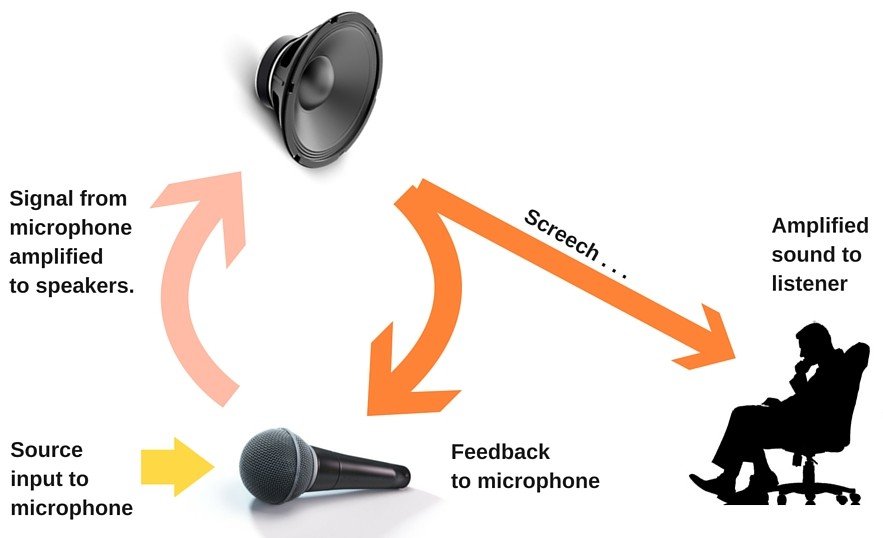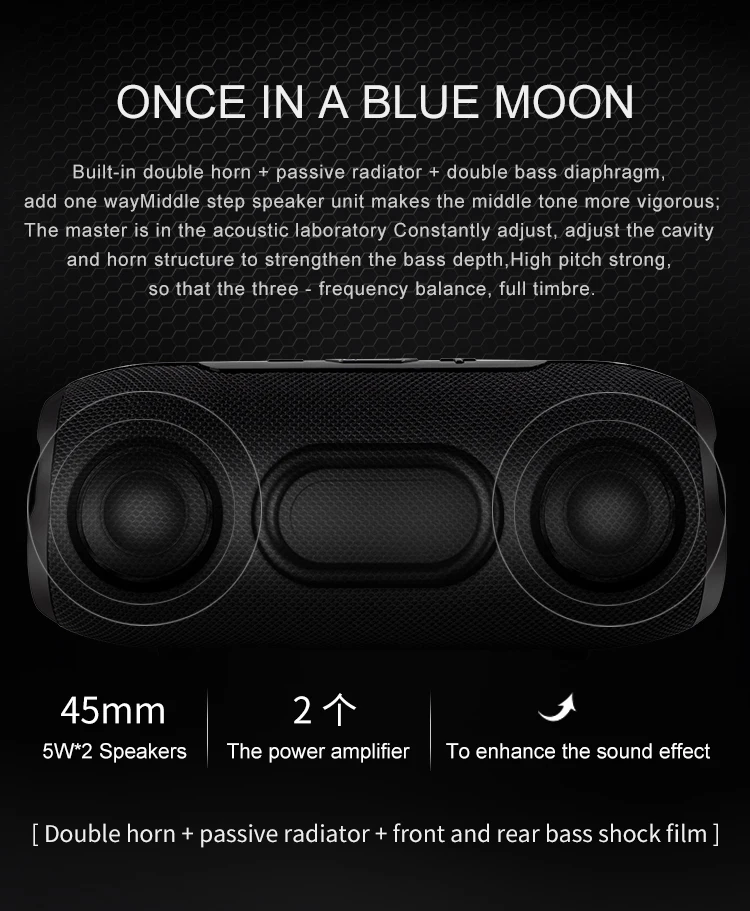
The most important thing you must do to avoid feedback is to distance the mic from the speaker as far as practically possible, and position these devices in a way so that the mic doesn’t catch the sound coming out of the speaker too directly. The result is that you hear a high-pitched squeal, which gets louder and louder (due to the reinforced amplitude as a result of multiple rounds of amplification) until it is corrected.

However, if the sound discharged from the speakers somehow reaches back to the mic (which ideally shouldn’t happen), the process discussed above kick-starts again, i.e., the mic transmits sound to the amplifier, which then transmits to the speaker, and back to the mic… and then this goes on and on. These ‘amplified’ signals are then sent to the speakers (audio output), where electrical signals are converted into sound and subsequently discharged to the audience. The mic transmits your voice to another device, known as an amplifier, which enhances the amplitude of the signals that it received from the mic. Therefore, you speak into a microphone (or simply, a mic). Sure, you can shout to be loud enough, but that’s not what I, or anyone else (including your doctor), would recommend.

When you speak in front of a large audience, you obviously have to be loud enough to be audible to everyone present. To understand it better, let’s have a brief look at how typical audio system works. The reason is simple feedback occurs when the microphone picks up the output sound from the speakers and then sends it back to the speakers to re-amplify it, kick-starting an endless loop unless interfered with externally.

Wherever all three of these components are present, there it the potential for feedback. A typical audio system (like a Public Address system or the audio system used by bands) consists of three essential components: a microphone, a speaker and an amplifier.


 0 kommentar(er)
0 kommentar(er)
